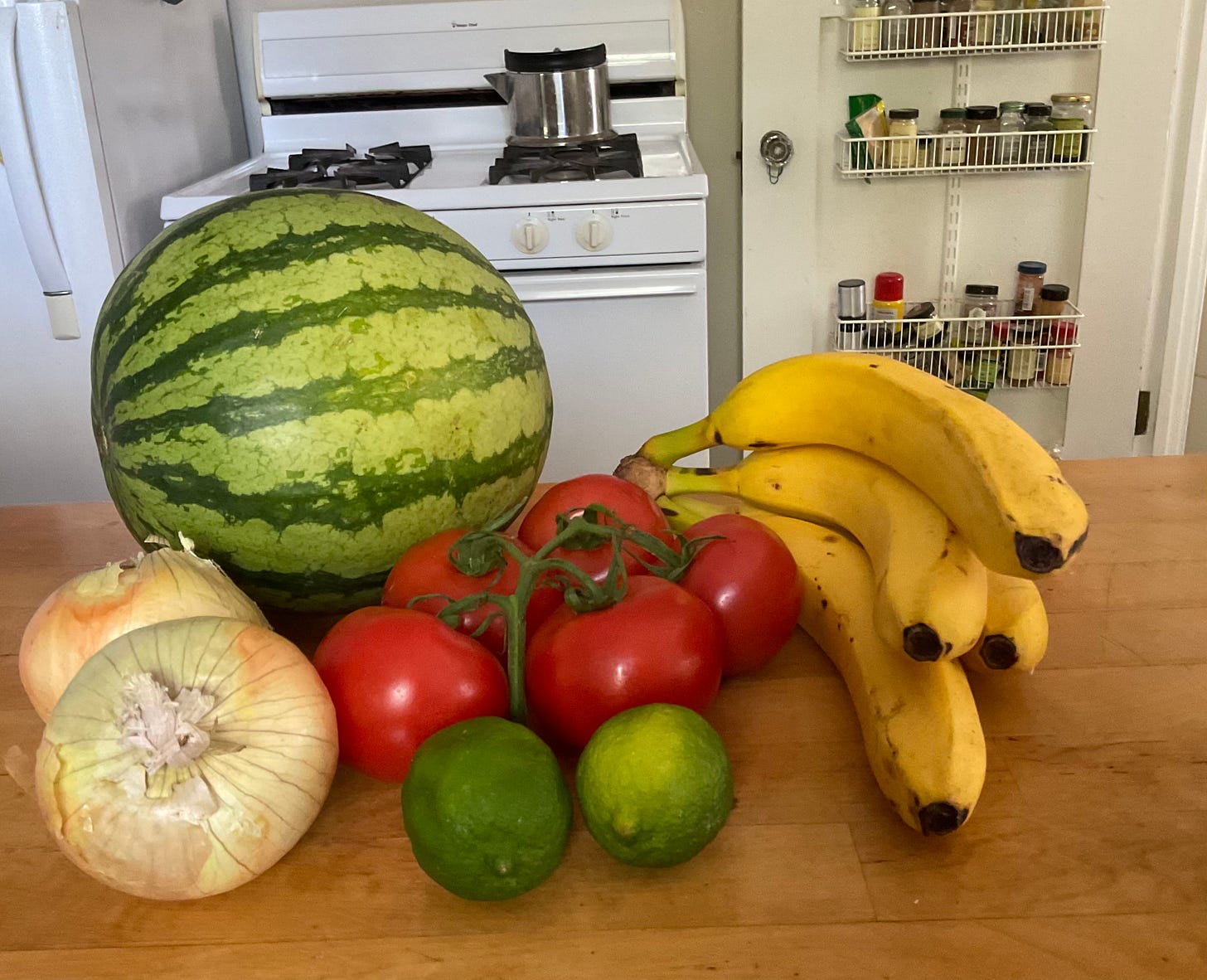It Might Be a Good Thing to Eat Local, After All
Research from 2022 finds more emissions from food transportation than previously thought
Back in October of 2021, I published a Green Dispatch on some of the research into what is called food miles, the distance that pork chops and snow peas travel from farm to dinner plate. From the latest research at that time, I came to the conclusion that trying to eat locally produced foods didn’t really bring down a person’s carbon footprint, at least not that much, and that being a locavore was perhaps good but not really worth the effort.
Now, new research finds that moving our food from farm to grocery store or restaurant may emit more greenhouse gases than previously thought. So I might be checking those country of origin stickers on my food again. Before I get to that, let’s back up a little bit…
How we got to locavore
Concern cropped up earlier this century over energy use in our food system. One research paper published in 1969 estimated that our apples, burgers, gooseberries, and all our other foods traveled an average of 1,346 miles from farm to plate. Further, in 1996, researchers at the University of Wisconsin–Madison, estimated that fresh produce traveled 1,500 miles before it was eaten by an American. By around 2008, that 1,500-mile estimate had made it into the popular press.
Folks were aghast to think that all their pork chops and raisins made the equivalent of a road trip from Kansas City, Missouri, to Los Angeles before they turned into lunch or dinner. If you loved the planet, then you made sure your food came from local sources, and “locavore” became the next buzzword.
Being a locavore was a somewhat easy and enjoyable way to express your concern for the planet. It could be kind of interesting and fun to discover local greens or apples and appreciate seasonal foods. I don’t know if things really tasted fresher, knowing that they were grown less than 100 miles away, but they seemed fresher. Eating locally sourced foods became trendy, so much so that “Locavore” received the honor of the Oxford University Press Word of the Year in 2007.

Meanwhile, researchers looked more in depth at the food-mile phenomenon. They found the manner of transportation—whether a potato or turnip was transported by ship, train, or truck—made a huge difference in the carbon output of the food’s transport. Cargo ships and trains are hundreds of times more efficient at moving things than trucks, which transport most local food to the neighborhood grocery story. The researchers estimated that produce could travel very far by boat or train and produce fewer emissions than similar food trucked a couple hundred miles.
And as shippers are always looking to cut costs, and prefer to ship food using the least amount of fuel, food miles really shouldn’t make that much difference. Leave the guilt behind when you buy that cantaloupe from Colombia. Of all the worries of how our personal habits and choices emit carbon, where our food came from was not one of them. That’s the conclusion I came to back then.
Keep reading with a 7-day free trial
Subscribe to The Green Dispatch to keep reading this post and get 7 days of free access to the full post archives.

